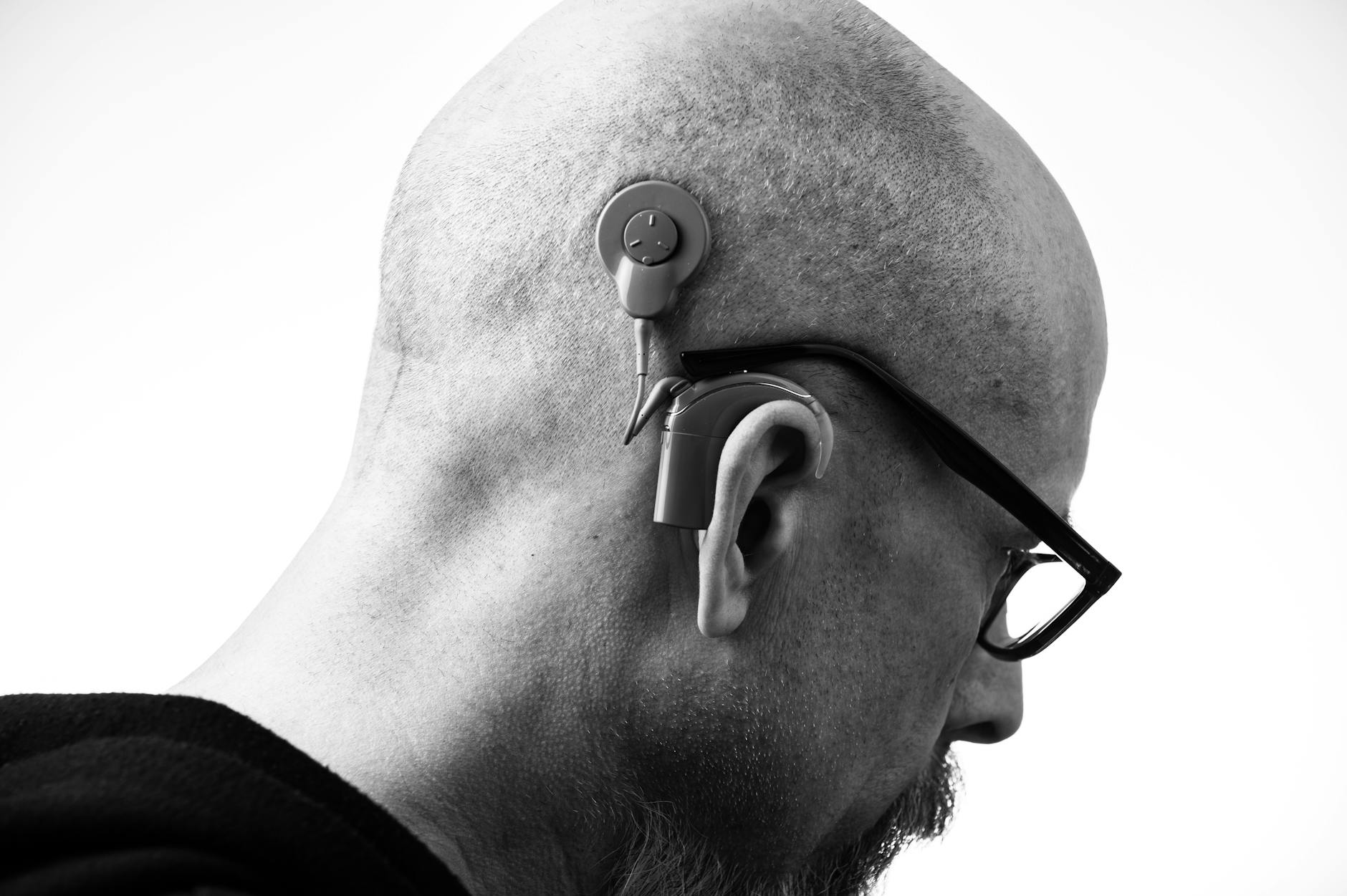Lede: If you pass a standard hearing test but leave dinners, meetings, or family gatherings feeling drained from trying to follow every word, you’re not alone—and you’re not imagining it. This guide demystifies “hidden hearing loss,” explains why listening can feel like hard work, and gives you practical, evidence-based steps to reclaim ease in conversation.
What Is Hidden Hearing Loss?
Hidden hearing loss describes a real-world hearing difficulty—especially with speech in noise—despite a normal or near-normal standard audiogram. Many people notice they can hear sounds, but they can’t sort out speech from background noise without a lot of effort. The result: strained concentration, mental fatigue, and a tendency to avoid noisy places.
Scientists often link this to changes in how the ear and brain communicate, particularly the connections (synapses) between inner ear hair cells and the hearing nerve. Even when hearing thresholds look normal, damaged neural connections can reduce “clarity” and resilience in challenging listening situations.
Why It Happens: The Science, Simplified
Likely contributors
- Noise exposure over time: Louder-than-safe sound levels—from concerts and clubs to power tools and high-volume earbuds—can stress the auditory system. Even a single intense event may have lasting effects.
- Age-related changes: The auditory system naturally becomes less efficient with age, especially for processing fast, complex speech cues in noise.
- Ototoxic exposures: Some medications and chemicals can affect auditory structures. Always discuss medication concerns with your prescribing clinician.
- Health factors: Cardiovascular health, diabetes, and smoking can influence blood flow and neural health, indirectly impacting hearing function.
Hidden hearing loss is not a formal diagnosis you’ll see on a typical clinic printout; it’s a functional description of your experience. The important part: your struggles are valid, and there’s a lot you can do.
How It Feels: Common Early Signs
- You hear people talking, but speech blurs together in restaurants, meetings, or open offices.
- You need to watch lips and faces to understand, especially in noise.
- Conversations feel like work; you’re tired after social events (“listening fatigue”).
- You often say “What?” or “Can you repeat that?” more in noise than in quiet.
- Music sounds fine, but group conversation is frustrating.
- Tinnitus (ringing or buzzing) may flare after loud environments.
If these sound familiar, consider a focused hearing and communication assessment—not just a threshold audiogram.
What to Ask For at an Audiology Visit
An audiologist can tailor testing beyond a basic hearing screen. Consider asking about:
- Speech-in-noise testing (e.g., QuickSIN, HINT): reveals how well you understand words with background noise.
- Extended high-frequency audiometry: checks frequencies above 8 kHz that can be affected early by noise.
- Otoacoustic emissions (OAEs): assesses outer hair cell integrity—often sensitive to noise-related changes.
- Auditory processing screening: to rule out central auditory processing challenges when appropriate.
Your clinician will also ask about noise exposure, health history, work environment, and specific listening goals. That context guides a targeted plan.
Gentle reminder: If you’re struggling to hear or experiencing tinnitus, dizziness, ear pain, or sudden changes in hearing, please seek prompt evaluation from an audiologist or ENT specialist.
Practical Fixes That Work Today
Communication strategies
- Lead with visibility: Choose seats with good lighting and face your conversation partner. Visual cues reduce effort.
- Front-load context: Ask for the topic before details. Knowing the subject helps your brain fill gaps.
- Confirm, don’t pretend: Repeat back key points (“So, 3 p.m. at the clinic, right?”) to catch mishears early.
- One voice at a time: In groups, kindly suggest turn-taking to avoid layered chatter.
Environment hacks
- Pick the quiet corner: Sit with your back to walls, away from speakers and kitchens. Soft furnishings help dampen noise.
- Mind the music: Ask staff to lower background music during meetings or dinners when possible.
- Use your phone as a tool: Live-transcription apps and sound level meter apps can make conversations easier and help you choose quieter spots.
Ear-level tools
- High-fidelity filtered earplugs: They reduce volume evenly while preserving speech cues—great for restaurants, open offices, and concerts.
- Remote microphones: A clip-on or tabletop mic paired to your hearing aids or hearables can boost the speaker over background noise.
- Hearables with beamforming: Some earbuds offer directional “focus” modes that improve speech in front of you.
- Assistive listening systems: Many theaters, churches, and lecture halls offer loop or FM systems—ask for the receiver.
These tools don’t replace professional care, but they can immediately reduce strain in daily life.
Do I Need Hearing Aids If My Audiogram Is Normal?
Maybe—depending on your goals and the environments that challenge you. Today’s devices are as much about clarity and noise management as they are about loudness. Modern solutions include:
- Traditional hearing aids: Can be programmed for subtle support, emphasizing speech frequencies and advanced noise reduction. Some clinics offer “hear-in-noise” programs tailored to normal-threshold users who struggle in complex settings.
- Over-the-counter (OTC) hearing aids/hearables: For adults with perceived mild-to-moderate difficulties, certain OTC devices provide directional microphones and speech enhancement features.
- Remote microphones and accessories: Often the single biggest boost for meetings, classrooms, and restaurants when paired with hearing aids or certain earbuds.
The right choice is personal. An audiologist can let you trial options and measure actual benefit using speech-in-noise tests, so you can feel the difference—not guess.
Protecting the Hearing You Have: Your “Sound Budget”
Noise exposure is like sun exposure—some is okay; too much adds up. Two widely cited safety guides:
- NIOSH/CDC: About 85 dBA for 8 hours daily is the recommended exposure limit, with a 3 dB exchange rate (every +3 dB halves safe time).
- WHO: For recreational listening, aim for a weekly dose not exceeding about 80 dB for 40 hours (lower for children).
Practical rules of thumb
- 60/60 rule: Keep personal audio around 60% volume for no more than 60 minutes at a time; take listening breaks.
- Distance is protection: Doubling your distance from a speaker can cut sound energy dramatically.
- Carry earplugs: Keep a pair in your bag, car, or keychain. Use them for concerts, sports events, bars, and even noisy commutes.
- Use a sound level app: If levels hover above the mid-80s dB for long periods, protect your ears or step out for breaks.
Remember, every bit of reduced exposure helps. Prevention is powerful, and it’s never too late to start.
Listening Fatigue Is Real—Here’s How to Recover
- Schedule quiet time: Build 10–15 minute “ear breaks” after noisy tasks or social events.
- Hydrate and move: Light activity and hydration support overall neural function and stress recovery.
- Sleep: Good sleep helps your brain process auditory information and improves attention the next day.
- Mind your stress: Stress can heighten sound sensitivity and tinnitus. Simple breathing or mindfulness practices can help.
Myths, Clarified
- “If the test is normal, it’s all in my head.” False. Standard audiograms don’t capture everything about real-world hearing.
- “Louder is always better.” Not necessarily. Clarity, directionality, and reducing background noise matter more than sheer volume.
- “Damaged ears can fully regenerate.” In humans, inner ear hair cells and synapses do not reliably regrow once lost. Protecting what you have is key.
- “Supplements will fix it.” There’s no proven pill for hidden hearing loss. A healthy lifestyle and noise protection have the strongest evidence. Always discuss supplements or medications with your clinician.
Tinnitus and Hidden Hearing Loss
Tinnitus often rides along with noise exposure and listening strain. If you notice ringing getting louder after loud events, consider that a warning light. Strategies that lower your noise dose, improve sleep, and reduce stress can lessen tinnitus impact. If tinnitus is persistent, bothersome, or in one ear only, seek evaluation with an audiologist or ENT.
When to Seek Help
- You avoid social plans because of noise and fatigue.
- Colleagues mention you miss details in group meetings.
- Tinnitus, ear fullness, or sound sensitivity is increasing.
- You’ve had a loud exposure (concert, explosion) with lingering changes.
An audiologist can assess, explain your results in plain language, and map out practical steps—often starting with strategies and assistive tools before any commitment to devices. If anything seems medically urgent (sudden hearing change, one-sided symptoms, pain, drainage, spinning vertigo), seek ENT care promptly.
Your Next Steps
- Track your toughest situations for 1–2 weeks. Note places, times, and what made things easier or harder.
- Book an audiology visit and ask about speech-in-noise testing and targeted counseling.
- Start a sound budget using earplugs, distance, and breaks—today.
- Test-drive solutions like filtered plugs, hearables, or a remote mic in your real-life settings.
Small changes add up fast. Your energy, focus, and confidence in conversations are worth it.
Frequently Asked Questions
Can hidden hearing loss be cured?
There’s no proven cure to restore damaged inner-ear connections in humans. The good news: many people achieve easier conversations and less fatigue by combining smart communication strategies, noise protection, and targeted technology (like directional microphones, remote mics, or carefully tuned hearing devices). An audiologist can personalize a plan and measure your real-world benefit.
Do I need hearing aids if my hearing test is normal?
Not always. Some people do well with filtered earplugs, remote microphones, and hearing-friendly habit changes. Others benefit from low-gain, noise-focused hearing aid programs or select OTC devices. The best way to know is to trial options and use speech-in-noise testing to confirm what actually helps you in your most challenging environments.
What’s the difference between hidden hearing loss and auditory processing disorder (APD)?
They can feel similar. Hidden hearing loss often reflects changes in the ear-to-nerve connection that make noisy settings hard, even with normal thresholds. APD involves how the brain processes sound. Both can cause trouble in noise, and they can overlap. An audiologist can screen for both and guide you to the right next steps.
Are high-fidelity earplugs safe if I already struggle to hear in noise?
Yes. Filtered earplugs lower overall sound without distorting speech as much as foam plugs. By reducing overwhelming background noise, they can make voices relatively clearer and reduce fatigue. They’re especially helpful in restaurants, concerts, and open offices.
References
- CDC/NIOSH: Occupational Noise Exposure and Hearing Loss Prevention
- WHO: Make Listening Safe (Safe listening levels for recreational sound)
- NIDCD: Noise-Induced Hearing Loss



